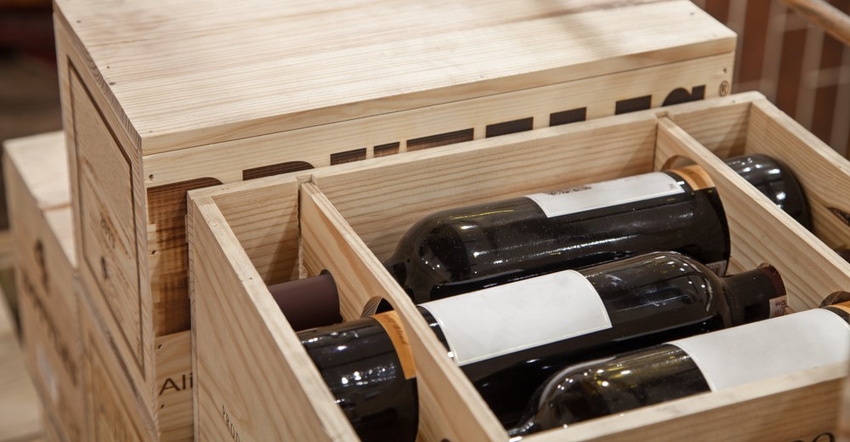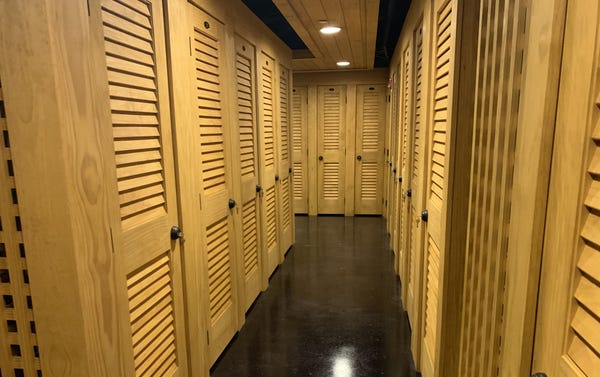Consumer interest in wine is increasing nationwide, even during the coronavirus pandemic. This widens an add-on revenue opportunity for self-storage operators. Learn to tap this business stream with advice on wine-storage design, marketing, sales and more.

“The discovery of wine is of greater moment than the discovery of a constellation. The universe is too full of stars.” That’s what Ben Franklin had to say about wine, and it seems modern-day consumers agree. They’ve been discovering the joy of imbibing and collecting vino in increasing numbers over the last decade. In fact, there’s been a 20 percent increase in sales since 2016; and 80 percent of those purchases have been “investment” wines, bottles that sell for $30 and up, according to “USA Today.”
Even during the height of the COVID-19 crisis, there was a 20 percent increase in wine consumption, according to Wine Intelligence. The market-research firm also reported that though consumers are feeling the economic impact of the pandemic, “little luxuries” like wine will continue to rise.
This trend makes wine storage an excellent, even exciting, profit center for self-storage operations. First, this niche offering is a market differentiator that can make your facility stand out from competition. A wine-storage area is an impressive feature. Not only will it attract customers interested in the service, it puts self-storage top of mind with a demographic that may not otherwise have considered it.
Wine storage is also a great way to increase profit. While revenue per square foot runs $1 to $5 for traditional self-storage, and $5 to $15 for climate-controlled units is, wine storage can achieve $50 to $150 per square foot, which is clearly a significant boost. Consider, too, that wine-storage customers tend to stay longer than typical tenants.
But before you dive in nose first, it’s important to assess the viability of wine storage in your particular market. Perform a feasibility study to determine if you’re in an area with the right demographics. If the research comes back positive, follow this advice for wine-storage design, marketing and sales.
Design Factors
A wine-storage area must be designed differently than typical climate-controlled storage. Units can vary in size from small, 2-by-2 cubicles that fit a case of wine to 8-by-11 units that hold up to 400 cases. It’s best to offer a variety of sizes to accommodate various types of collectors.
Wine also needs to be kept in a controlled environment of 50 to 60 degrees Fahrenheit and 60 percent to 70 percent relative humidity. This means you must have the right HVAC system and insulation in place as well as technology to regulate and track climate changes. Drastic fluctuations can change a wine’s consistency and even cause it to go bad, so any system malfunction must be addressed immediately. It’s highly recommended that you connect with a contractor who has wine-storage experience.
When designing your wine-storage area, security should be a primary focus. Some wine collections can be worth thousands of dollars, so this will be important to customers. If your neighborhood isn’t perceived as safe, or your facility lacks the right security features, your units will sit empty. Think carefully about where and how tenants will enter the wine-storage area and what kind of access control to use. Consider a keyless lock system, and install video cameras.

The wine-storage area at Bee Safe Storage and Wine Cellar in Greensboro, N.C.

Marketing
Wine storage will require special marketing. One way to promote your offering is to ensure every customer who visits your self-storage facility gets a tour of the wine area. Though not every prospect will need the service, he may know someone who has a collection.
Reach out to high-end restaurants, wine bars and country clubs in your area. These will likely employ sommeliers, trained and certified wine professionals, who are and know possible wine-storage clients. Most wineries will have their own wine clubs, so connect with winemakers in your area as well.
You can also host wine-education events at your facility. Bring in some aficionados to discuss wine basics and topics of interest.
In many instances, your best marketing tool will be the customers who occupy your wine-storage units. Referrals from this hyper-niche group will be key, so treat them like VIPs. As a nice touch, offer them a gift when they rent with you, such as a wine bag filled with a bottle opener and other related swag.
Sales
Internally, it’s important to train and educate your self-storage staff. There are several online resources that can help teach “Wine 101.” The more knowledgeable employees are about wine, the better equipped they’ll be to sell and market your offering, attend to customer needs, and grasp the nuances required with this type of service.
Ramping up this portion of your business and filling your wine-storage units can take a while, so be patient. Don’t fall prey to the “If you build it, they will come” mentality. Just as with wine itself, the best things come with time.
Wine purchases, consumption and collection are on the rise across all ages of consumers, so this is a multi-generational opportunity. The addition of wine storage as a profit center can enhance your self-storage facility’s image and attract a different type of renter. If you take the time to get your design and unit placement right, it can be a profitable, intoxicating revenue stream.
Steven Jeffers is the facilities and operations manager for Bee Safe Storage and Wine Cellar, which operates 21 self-storage facilities in the Carolinas, Tennessee and Texas. His experience and knowledge includes local marketing, management optimization and leadership training. To reach him, e-mail, [email protected].
About the Author(s)
You May Also Like





